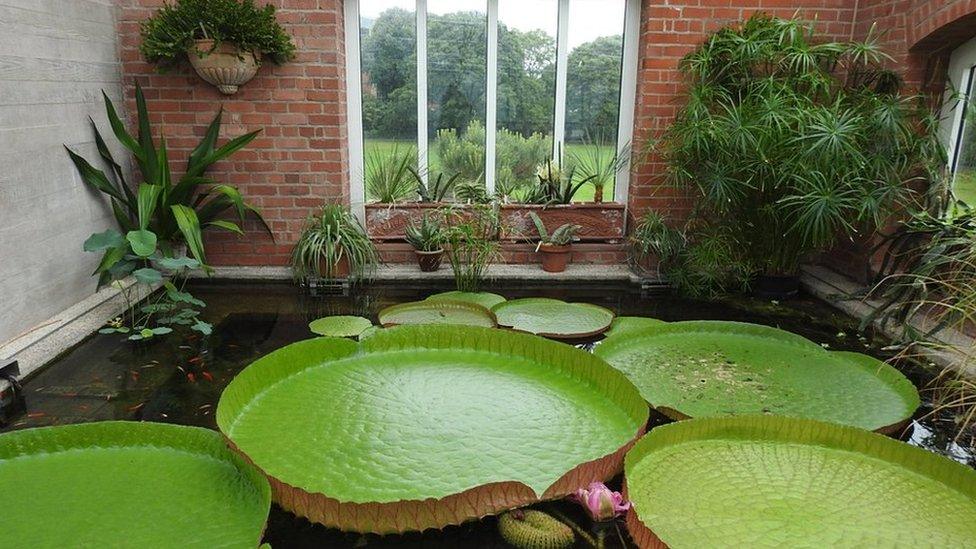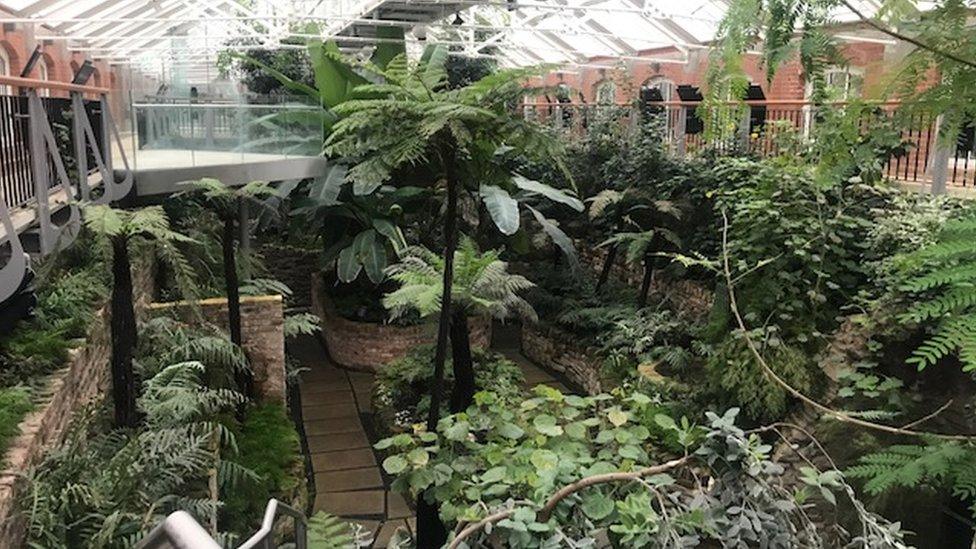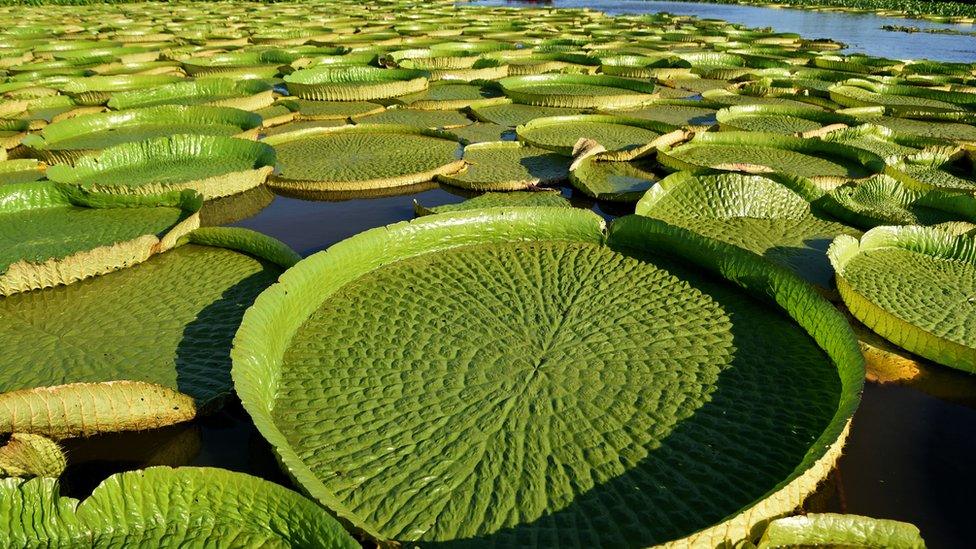Giant water lily returns to Belfast after 30 years
- Published

It may have had a multi-million pound facelift in recent years but the Tropical Ravine in Belfast's Botanic Gardens is from another age.
That Victorian epoch is summed up in the story of one plant - the giant water lily.
First described in 1837, it was named Victoria regia after the new Queen.
Seed had been brought back to Britain from British Guiana (now known as Guyana) in South America and a couple of competitive dukes decided they would attempt to get this monstrous aquatic plant to grow.
Light levels and temperature were against them, but it was the spirit of the age to make the impossible possible and sure enough the Duke of Devonshire pulled it off in 1849.
Only a few years later in 1852, Daniel Ferguson, curator of the then-Royal Botanic Gardens (later Belfast's Botanic Gardens) successfully grew and brought the lily to flower for the first time in Ireland.
The gardens were private then and only opened on Sundays to the public.

A new pond designed for the Giant Water Lily was installed during the Tropical Ravine's recent renovations
Every year, visitors would pay to view Victoria regia (later Victoria amazonica) and experience a world far away from Belfast.
Initially it was grown in a temporary structure but, by the end of the Victorian period, the ravine was adapted to give it a home there.
It's not clear what happened in the following decades but, at some point, it was no longer possible to grow this giant until a refurbishment in the early 80s.
Andy Bingham, a young gardener there in 1983, remembers his aquatic encounters with the world's biggest water lily.
"The leaves on top are smooth but underneath there are inch long spines and down the stalk of the leaf right down to the base. I suppose to protect them from being eaten under the surface.
"One of my jobs was to take the (invasive) surrounding plants away so I got jabbed quite often."
Renovation
The ravine underwent a £3.8m renovation between 2014 and 2018 and a new pond with the giant water lily in mind was installed.
In January this year, seeds of a hybrid giant lily (a cross between Victoria amazonica and Victoria cruziana for the botanists out there) were transported to Belfast under special conditions from Longwood Gardens in Pennsylvania, USA.
Gardener Derek Lockwood said germinating them takes a bit of skill.
"The initial sowing of the seed is a bit involved.

Gardener Adrienne Armstrong said the lily's growth "gives us hope for the future"
"We have to basically remove parts of the seed without damaging the embryo - the water temperature is critical for germination as well but once it had germinated and produced three or four leaves then we knew we were good to go."
There has been no public access to the ravine during the lockdown and while individual flowers only last a few days, it's hoped it will continue to send up new blooms over the next couple of months.
Gardener Adrienne Armstrong said it's the icing on the cake for the restored ravine.
"It's been almost 30 years since we've been able to grow it because conditions in the ravine just weren't suitable so to be able to do this again is amazing - and it gives us hope for the future."
You can hear more about this story on BBC Radio Ulster's Gardeners' Corner and BBC Sounds.
- Published25 May 2018

- Published9 January 2018
